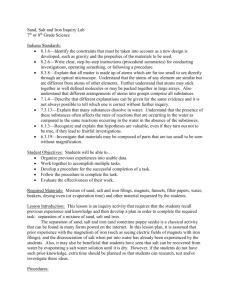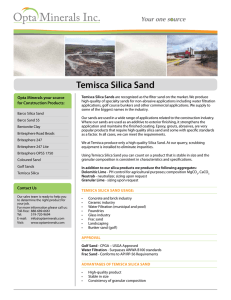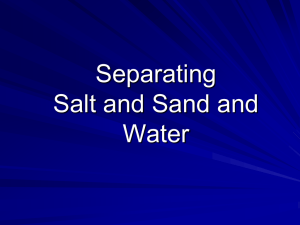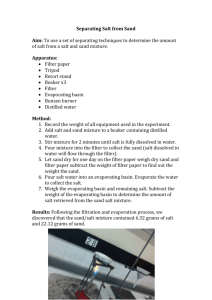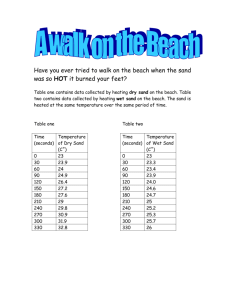Glass Half Empty-Protocol Introduction: Background: Describe the
advertisement
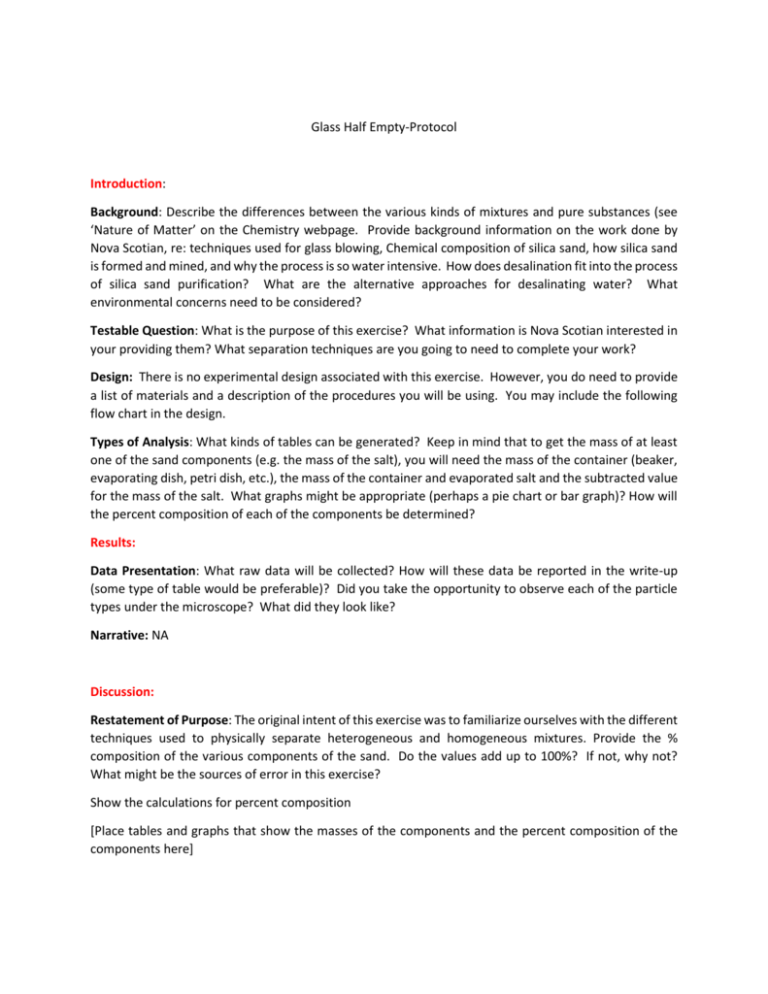
Glass Half Empty-Protocol Introduction: Background: Describe the differences between the various kinds of mixtures and pure substances (see ‘Nature of Matter’ on the Chemistry webpage. Provide background information on the work done by Nova Scotian, re: techniques used for glass blowing, Chemical composition of silica sand, how silica sand is formed and mined, and why the process is so water intensive. How does desalination fit into the process of silica sand purification? What are the alternative approaches for desalinating water? What environmental concerns need to be considered? Testable Question: What is the purpose of this exercise? What information is Nova Scotian interested in your providing them? What separation techniques are you going to need to complete your work? Design: There is no experimental design associated with this exercise. However, you do need to provide a list of materials and a description of the procedures you will be using. You may include the following flow chart in the design. Types of Analysis: What kinds of tables can be generated? Keep in mind that to get the mass of at least one of the sand components (e.g. the mass of the salt), you will need the mass of the container (beaker, evaporating dish, petri dish, etc.), the mass of the container and evaporated salt and the subtracted value for the mass of the salt. What graphs might be appropriate (perhaps a pie chart or bar graph)? How will the percent composition of each of the components be determined? Results: Data Presentation: What raw data will be collected? How will these data be reported in the write-up (some type of table would be preferable)? Did you take the opportunity to observe each of the particle types under the microscope? What did they look like? Narrative: NA Discussion: Restatement of Purpose: The original intent of this exercise was to familiarize ourselves with the different techniques used to physically separate heterogeneous and homogeneous mixtures. Provide the % composition of the various components of the sand. Do the values add up to 100%? If not, why not? What might be the sources of error in this exercise? Show the calculations for percent composition [Place tables and graphs that show the masses of the components and the percent composition of the components here] How might you determine the % error? Perhaps you might think in terms of the total mass of the sand sample versus the total mass you get when you add the masses of (1) salt, (2) iron fragments, (3) low density particulates, (4) the silica sand component and (4) the detritus. Suggestions for Future Research: Are there any modifications that might be made to the separation techniques that were used in this exercise that could improve the quality of the results? What about alternative separation techniques? Separation Flow Chart Emirate Sand Sample Magnet Iron fragments Remaining Sample Separate iron from magnet Mass Iron fragments Water and filter Salt solution/particulates Dry Low density particulates Evaporate water Dry and Sieve Mass salt sample Mass Mass Low density particulates Remaining Sample Remaining Sample Mass Silica sand

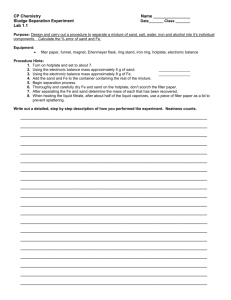

![LAB 4 FB Safety [BH]](http://s3.studylib.net/store/data/007109339_1-10edf2f99cf9e3f5eb5770ce96c065cf-300x300.png)

